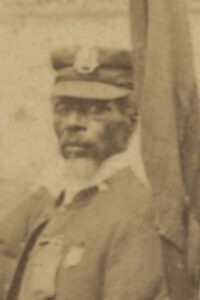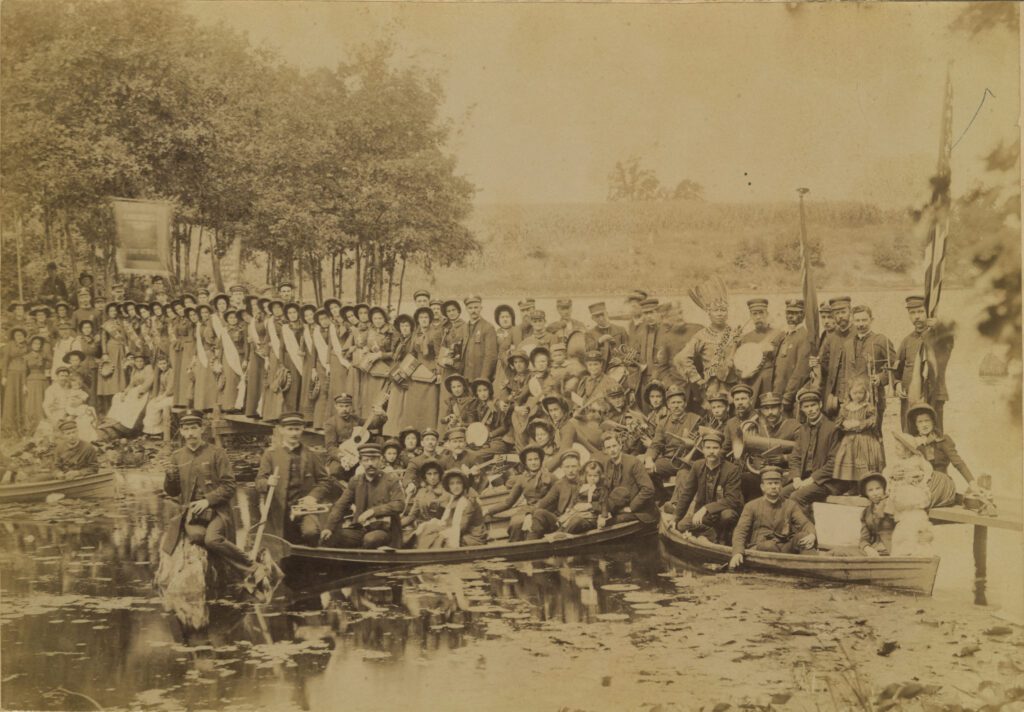
During his seventy-five years, Solomon D. Rages experienced some of the most significant and tragic events in American history, met the love of his life, and found his way to the Lord.
Born a free person in Maryland[1] around 1830, Solomon grew up in a single parent household of sixteen people. According to newspaper accounts, the whole family was sold into slavery when Solomon was six years old. He would later be sold again in Frederick, Maryland and separated forever from his mother and siblings. During the Civil War he was liberated and served as a wagon driver for the Union Army. Military records for Solomon do not appear to exist, which means that he was very likely classified as a contraband, a liberated enslaved person who worked as a military contractor. He was therefore not eligible for a military pension. Census records show that Solomon may have been semi-literate but didn’t know how to write. This certainly limited his employment opportunities. After the war he worked as a day laborer and in a saloon for fifteen years where he often found solace in alcohol. He claimed to be Frederick, Maryland’s most notorious drunk. In 1889 he married Rachel L. Brewer, also from Frederick, who was nineteen years his junior and worked as a cook. They did not have any children.
Solomon met The Salvation Army in the early 1880s, welcomed Christ into his heart, and left the bottle behind. He became corps sergeant major for his Frederick, Maryland corps. During the 1890s and first years of the 1900s Solomon toured the country and attended the 1894 and 1904 international congresses in London and toured corps in the United Kingdom. During these events he shared his testimony and served as a leader for other African American speakers and performers. Using the stage name “Uncle Solomon” his appearances were featured with other speakers and performers who, like Solomon, had unique life stories. In 1893 Solomon left his home in Maryland for Detroit, Michigan to aid the Army there. His appearance was featured at an 1895 camp meeting in Flint, Michigan. The museum holds photographs from this event in our collection. His work in Detroit and Flint helped to lay the foundation for the Army’s work in the region. It is undocumented how long he stayed in Detroit and the exact nature of his work there. The Salvation Army did not keep records of the work performed by Salvationist like Solomon. Today, we can only learn about this important work through newspaper articles and genealogical research.
Although they were both long-time soldiers in The Salvation Army, Solomon and Rachel remained members of their hometown African Methodist Episcopal church. In the 1890s and very early 1900s The Salvation Army was starting to define itself in the United States itself as a church. Initially the Army identified as a partner to established churches, not as a distinct Christian denomination. When Solomon was promoted to Glory at age 75 on August 28, 1904, the services and burial were performed in Frederick by Reverends Wagoner and Carroll of the Quinn A.M.E. church. By telegram Major David Dunham apologized that he could not reach the church in time as he had been ordered to perform the service. Rachel also was buried from the Quinn A.M.E. church when she was promoted to Glory following a battle with heart disease in 1907. The Rages were well known and respected in their community and the newspaper obituary noted that Solomon received floral tributes at his funeral from African American and White residents. During his lifetime, Solomon D. Rages had risen through trauma to become a follower of Christ and leader in his churches and community.
Featured image: Michigan and Indiana Division officers at camp meeting in Flint. Michigan, 1895. Solomon Rages is pictured standing on the far left in the back row next to the flag.
[1] To learn more about free African Americans who lived in salve holding states see Slaves Without Masters: The Free Negro in the Antebellum South by Ira Berlin published in 1974 and reissued in 2007. A great review of this book and analysis can be found in this blog post by Henry Louis Gates, Jr. https://www.pbs.org/wnet/african-americans-many-rivers-to-cross/history/free-blacks-lived-in-the-north-right/. Warning: these sources contain harsh language and use terms which are considered offensive today but were in common use at the time when first written or spoken. Full disclosure, I learned of this book through Gates’s blog post, and it is now at the top of my must-read list.

